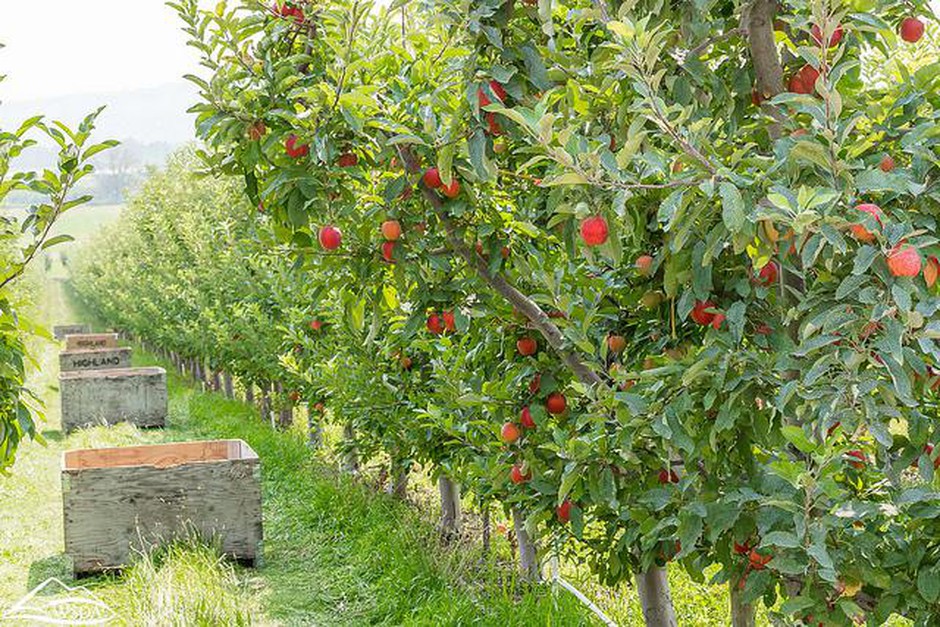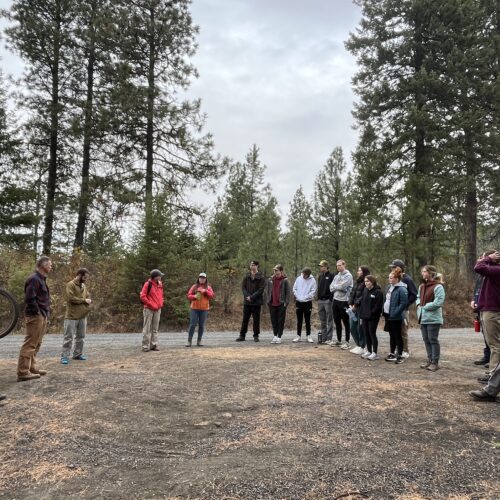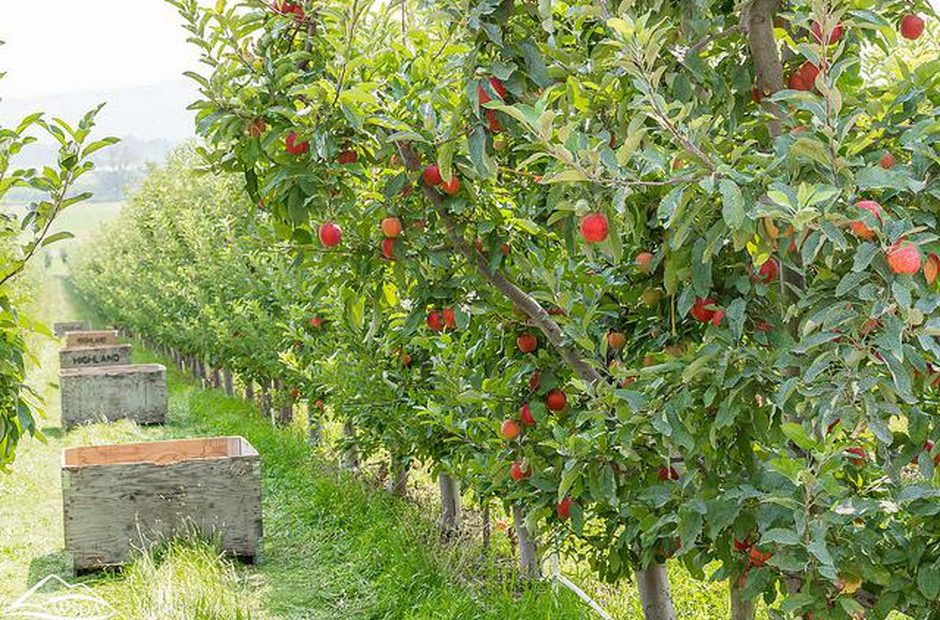
Study Shows Potential Link Between Parkinson’s And Widely Used Herbicide In Agricultural Regions
Read On
Editor’s Note: This article was temporarily taken offline to allow for further reporting about the Journal of Environmental Research and Public Health. It is the academic journal responsible for publishing the research at the center of this news report.
UPDATED, March 12, 2019, 4:45 pm PT:
One of the country’s most widely-used herbicides could be linked to an increase in early deaths from Parkinson’s disease for people who live near farmlands, according to new research in Washington.
Parkinson’s is a neurodegenerative disease that causes muscles to stop functioning properly. There are no known cures.
New research conducted in some of Washington’s most productive agricultural regions suggests glyphosate, the active ingredient in the popular herbicide Roundup, could be linked to more people dying from Parkinson’s disease before they turn 75.
“I remember sitting in the office, and I think we were all looking at each other and thinking, ‘Wow, that’s serious,’” said Mariah Caballero, the study’s lead author.
The research team studied land-use maps from the U.S. Department of Agriculture that showed agricultural chemical applications and death data from the Washington Department of Health. In some cases, the researchers found that people living within 1 kilometer of an area that had sprayed glyphosate were nearly one-third more likely to die from Parkinson’s disease before reaching the age of 75.
Caballero, a senior at Vassar College, conducted the research at Washington State University’s Community Health and Spatial Epidemiology Lab. The study was published in the International Journal of Environmental Research and Public Health.
“It’s very important to say, we don’t think there is any causation here. We’re just observing and seeing a relationship. There’s something here we need to investigate more,” said Ofer Amram, an assistant professor at the Washington State University College of Medicine and study co-author.
The researchers examined data of more than 4,600 people who had died from Parkinson’s in Washington. According to their published report, “several clusters of premature deaths were found in highly agricultural areas” in parts of Yakima and Douglas counties east of the Cascades, and Whatcom County in northwestern Washington. All three counties contain some of Washington’s more productive farmland.
In one section of Douglas County, they found a large cluster of people who died early because of Parkinson’s and lived within 1 kilometer of glyphosate application. In Yakima County 18 of the 22 deaths studied were within 1 kilometer of glyphosate application.
“It aligns fairly well with agricultural land. Generally, that’s in Eastern Washington because cropland and agriculture, in general, is centered there,” Caballero said.
The researchers looked at other agricultural chemical applications, including Atrazine, Diazinon and Paraquat.
The herbicide Atrazine and the insecticide Diazinon did not appear to be linked to premature deaths from Parkinson’s disease.
The herbicide Paraquat showed a slight increase in early deaths. When the researchers looked at all pesticides applied to cropland, they also saw a slight increase in premature deaths from Parkinson’s.
Of the early deaths the researchers studied, 93 percent were classified as non-Hispanic white, and 71 percent were male. The average age of death was 71 years old, as opposed to 85 years old for people who were diagnosed with Parkinson’s later in life.
A spokesperson for Bayer Crop Sciences, which merged with Monsanto Co. last year, said in an emailed statement that there is no evidence that glyphosate causes Parkinson’s disease. The company cited a 2011 study that found no link between glyphosate use and Parkinson’s. Glyphosate is the active ingredient in Monsanto’s Roundup herbicides.
“The authors of this study didn’t confirm whether their patients had even been exposed to glyphosate or that crops nearby had even been sprayed with glyphosate,” spokesperson Charla Lord said.
For her part, Mariah Caballero said herbicide and pesticide application data isn’t made available for researchers to work with right now.
“(In the study) we’re unable to specifically say that this pesticide was applied at this time, and how many times. But I think that also speaks to the record keeping that’s happening right now,” Caballero said. “I think that’s something that’s important — that we have the data to understand and analyze these things. Using land-use data is a proxy.”
She said it’s important that people know about the risks of glyphosate exposure, as well as when and where it’s being sprayed in agricultural areas.
Caballero grew up surrounded by Eastern Washington cropland, which is why she said wants people to have more scientific information.
“I absolutely understand the importance of farming and the importance that glyphosate plays in that realm. But I also really care about the health of communities, like my own, that often cannot advocate for themselves,” she said.
The publisher of the research, the Journal of Environmental Research and Public Health, has received criticism in the past for a lack of rigor in some of its articles, as well as for its number of retractions and corrections.
Despite such concerns, researchers at WSU said they are standing by the study and its publication in the Journal of Environmental Research and Public Health. Ofer Amram, a professor at the Elson S. Floyd College of Medicine, said the researchers published the study in an open access journal because it gives more people the opportunity to see the information.
“I think it’s a fine journal. It’s not the top of the top. One of the reasons this article is not in a top-of-the-top journal is because it’s exploratory. It doesn’t have a definitive answer, and we’re not claiming to have a definitive answer. We are taking secondary data, and we acknowledge its limitations,” Amram said.
NOTE: Washington State University holds the broadcast license of Northwest Public Broadcasting, though NWPB is editorially independent.
Related Stories:

Fries of the future could use less pesticides, water and be more resilient to climate change
Ken Luke, a manager with McCain Foods, shows off some of the old standby potato varieties, along with some of the new, like the fresh “King Russet,” at a recent
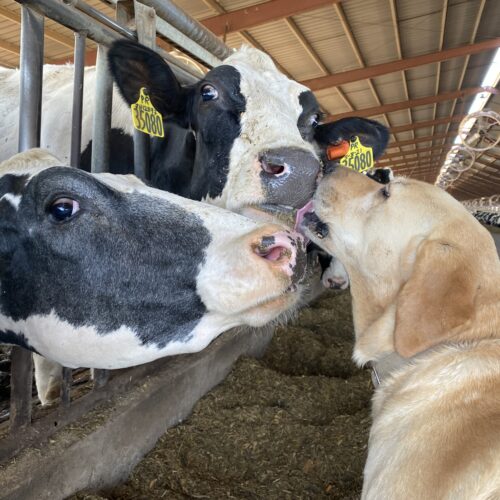
Dairy Steamer: Milk cows, like people, get hot and farmers use innovative ways to cool them
Maple, the 7-year-old yellow lab, takes a swift lick on a couple of milkers near Sunnyside, Washington. (Photo: Anna King) Listen (Runtime 3:54) Read It’s hot! It hit about 110
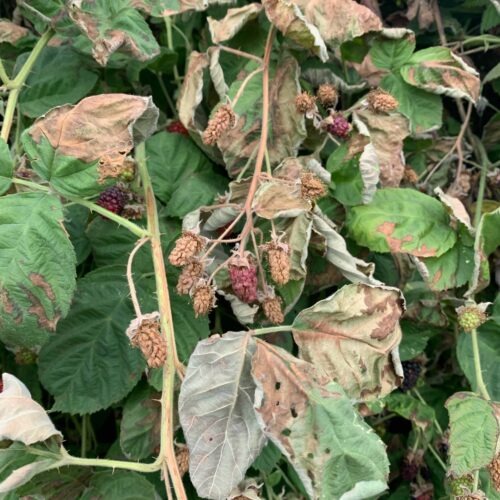
Berry Bake: Northwest Blueberry, Raspberry, Blackberry Crops Might Be Roasted From The Heat Wave
Blueberries, raspberries and blackberries from Oregon to Washington to British Columbia are baked on the bush and vine. Growers are calling the heat damage widespread and catastrophic.

